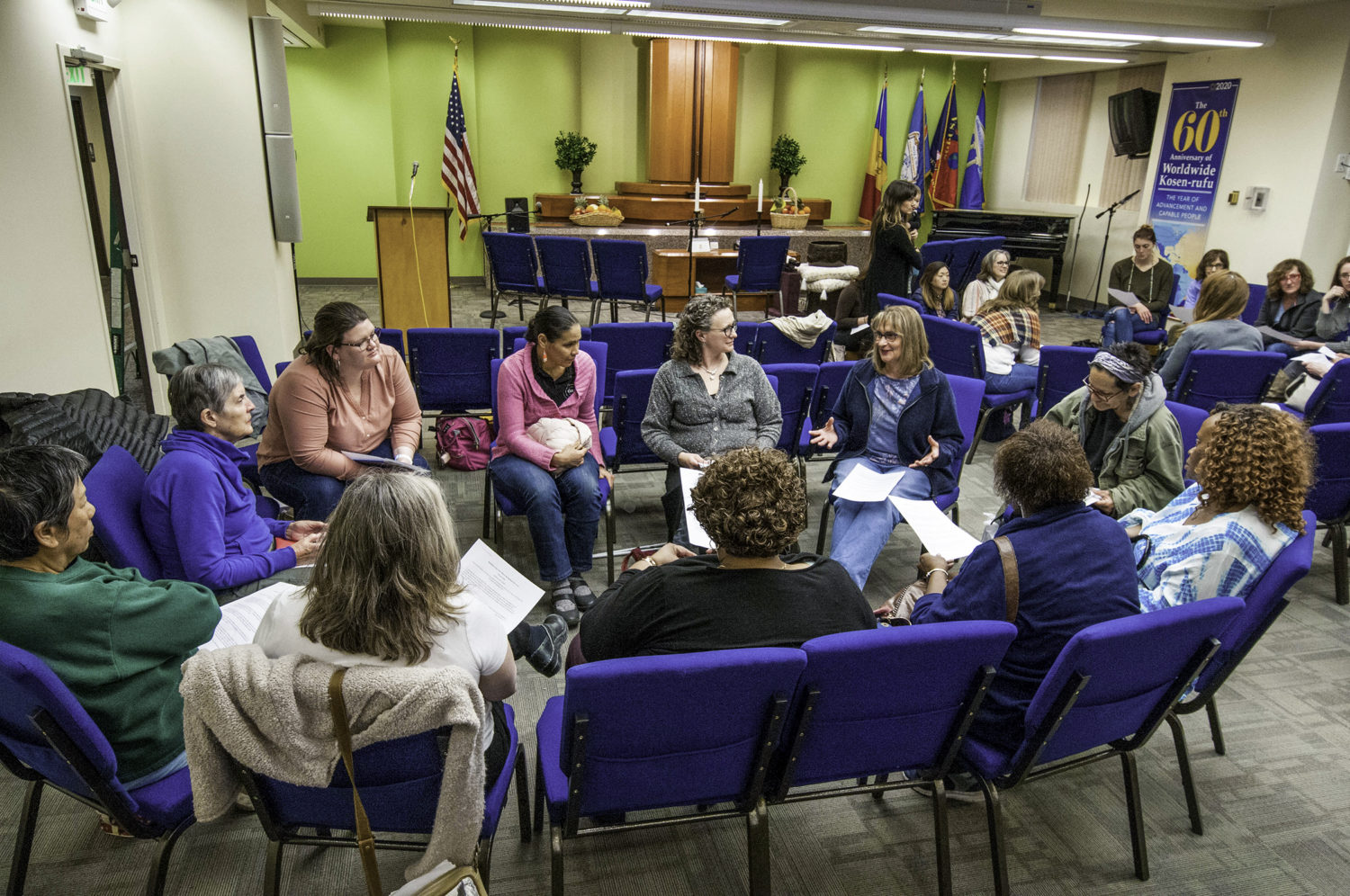Translated from the March 3, 2020, issue of the Seikyo Shimbun, the Soka Gakkai daily newspaper.
by Daisaku Ikeda
[March 3 is Doll Festival, or Girls Day in Japan, and is one of its five seasonal festivals.]
In reply to a disciple asking about the significance of the five seasonal festivals,[1] Nichiren Daishonin writes that they are “festivals corresponding to the order of the five characters of Myoho-renge-kyo,” and that “the third day of the third month is the festival corresponding to the character ‘ho’ [meaning ‘Law’]” (“On the Five Seasonal Festivals,” The Writings of Nichiren Daishonin, vol. 2, p. 374).
“Please look upon it in this way,” he says, “and chant Nam-myoho-renge-kyo. There can then be no doubt about the words ‘peace and security in their present existence and good circumstances in future existences’ [LSOC5, 136]” (WND-2, 374).
In the Soka Gakkai in Japan, March 3 is celebrated as Young Women’s Division Vow of Youth Day, Osaka Women’s Division Day, and Trailblazing Kyushu Women’s Day.
The women of Soka, dedicating their lives to kosen-rufu, are bright suns of hope and peace. I want to thank them from the bottom of my heart for their noble, inspiring efforts.
Traditionally, the dolls displayed on March 3 in Japan—Doll Festival, or Girls Day—symbolize a wish for the happiness of girls and women.
When my family home was burned down in an air raid during World War II, the only thing we managed to save from the fire was a single storage chest. When we opened it, however, all that it contained was a set of Girls Day dolls and an umbrella. While everyone in my family was disappointed, my mother said with a smile: “I’m sure we’ll live in a fine house again one day where we can display these dolls.” Her cheerful words lifted our spirits and turned our attention to starting anew.
Another time during the war, a powerful typhoon struck our house in the middle of the night, smashing windows and sending strong gusts of wind inside. In the pitch dark, my younger siblings were all terrified, but my father called out: “Don’t worry, I’m here! There’s no need to be afraid!” I can still hear his firm, reassuring voice.
Words can be a boundless source of strength at a crucial moment.
As Soka Gakkai members, our faith and practice based on the Mystic Law enable us to positively transform any kind of adversity, changing poison into medicine.
In challenging times, let’s warmly encourage one another, moving everything in a hopeful direction and creating value from it.
On March 3, 1940, founding Soka Gakkai president Tsunesaburo Makiguchi sent a postcard to a teacher who was originally from Kyushu. On it, he wrote with utmost sincerity that Nichiren Buddhism teaches the “great and supreme law of life,” and that faith in the Mystic Law is an “inner safe haven.”
Mr. Makiguchi urged the teacher to start practicing out of the wish that he join him in leading a fulfilling life. These efforts to share Nichiren Buddhism took place during the war. Some 18 years later, the teacher finally did join the Soka Gakkai, advancing on the path of mentor and disciple for the rest of his life.
The seeds of the Mystic Law sown by Mr. Makiguchi during his lifetime are now blooming everywhere.
No matter what difficult challenges he faced, Mr. Makiguchi continued to treasure each person and tried to find any way he could to help others form a connection with Buddhism. He acted in accord with the Daishonin’s words “Still I am not discouraged” (“The Essentials for Attaining Buddhahood”, WND-1, p. 748). When we think of Mr. Makiguchi’s struggle, courage rises in our hearts.
Countries around the world, including Japan, are making all-out efforts to contain the spread of the coronavirus (COVID-19). Let us chant the lion’s roar of Nam-myoho-renge-kyo even more powerfully, praying together in one heart for an early end to the outbreak and a return to normality.
Also, with deepest gratitude, my wife, Kaneko, and I are praying earnestly for the good health and safety of all our noble “uncrowned heroes” who deliver the Seikyo Shimbun newspaper each day, as unfailing as the sunrise.
References
- Five seasonal festivals: Festivals adopted by the Japanese imperial court in ancient times, incorporating a tradition from China and reflecting Japanese seasonal traditions. They fell on the first week of the first month, the third day of the third month, the fifth day of the fifth month, the seventh day of the seventh month, and the ninth day of the ninth month. On these festivals, ceremonies were conducted and special food prepared in celebration. In the modern calendar, they are celebrated on January 7 (New Year’s Festival), March 3 (Girls Festival), May 5 (Boys Festival), July 7 (Star Festival), and September 9 (Chrysanthemum Festival). ↩︎
You are reading {{ meterCount }} of {{ meterMax }} free premium articles

